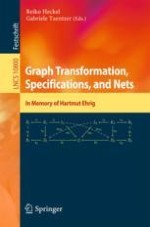2018 | OriginalPaper | Chapter
Model Transformations as Free Constructions
Author : Michael Löwe
Published in: Graph Transformation, Specifications, and Nets
Publisher: Springer International Publishing
Activate our intelligent search to find suitable subject content or patents.
Select sections of text to find matching patents with Artificial Intelligence. powered by
Select sections of text to find additional relevant content using AI-assisted search. powered by
